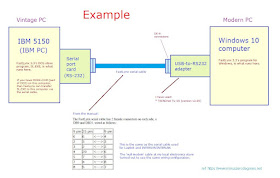I found a Record Player by Philips, model EL3514 in the dumpster.
Many parts are missing, but I decide to take this home.
I disassemble it, to my surprise both the tubes are untouched.
This player has a speaker, which is ok too. And three tubes (ECC83, EL95, DM71).
WARNING! - The project described in these pages utilizes POTENTIALLY FATAL HIGH VOLTAGES. Do not attempt to build circuits presented on this site if you do not have the required experience and skills to work with such voltages. I assume no responsibility whatsoever for any damage caused by the usage of my circuits.
The DM71 is an interesting tuning indicator tube that can be also use as power output indicator. I'll keep this valve for a future project.
The player also has one PNP germanium transistor, the AC107. I've tested it, seems ok. I'll keep it for some other project.
I don´t have a full tube guitar amplifier, so let's focus my attention on the main components of a small tube guitar amplifier, which are the main transformer, the output transformer, the preamplifier and the output tube.
First thing I've checked was the main transformer. It seems to work. It has high voltage output and low voltage output for tube heater. I just have to rewire it. I decide to keep the original voltage output selector. I will always use it with the 220V setting, but one can change the selector to make it works even at 100V.
Output transformer also seems to be working. At least it was now shorted.
Then I attached the tube heater and check. To my surprise the heating elements works.
I haven't got a tube tester. So I have to build a breadboard circuit to test tubes. Turns out that both tubes works.
The ECC83 it's branded Philips. This tube is also known as 12AX7 and it can be used as pre-amplifier. Indeed many guitar amplifier use this tube in the preamplifier stage.
As preamplifier reference I decide to use the Fender Champ 5F1 schematic.
The tone stack is indeed referenced from a Fender Blackface.
I can not found any guitar amplifier that use the EL95, which is a power output tube, also brand Philips, but there are a lot of old gear, as radios, that use this tube.
The EL95 can output up to 3W with 250V at plate.
For the output I take as reference the Philips EL3514 schematic.
Thanks to the https://www.radiomuseum.org website one can find a lot of schematic and information about old gears.
Let's put it all together in a case. I've use the original Philips case, cut some piece of new aluminum sheet from a PC case, makes some holes, painted black, and the tube amplifier main case is ready to use.
As guitar amplifier case I use a wine bottle wooden box. It all fits. I can even reuse the EL3514 handle and feet.
Wood is painted light walnut and finished with beeswax. There's a read hole to look at the tubes, the front panel is from the original R-Player.
Notes
- read risk disclaimer
- excuse my bad english
















































